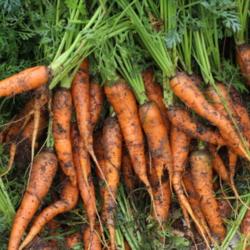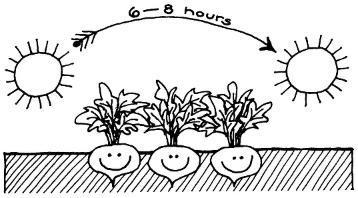
All great gardens start out as ideas. Start yours indoors on paper before planting seeds outdoors.
Planning on PaperThe gardening season catches some people by surprise every spring, but you can get ahead of the game by planning your garden on paper -- it's a nice way to spend a winter evening or two. Root crops will be among the first seeds you plant, so take the time to choose their place in the garden before the spring thaw creeps up on you. Be realistic about how many beets, carrots or rutabagas your family will eat, and plan on planting only what you can use. If you're trying a new vegetable, start off with only a few seeds until you see how you and your family like it.
You can plant root crops anywhere in the garden that gets six to eight hours of sun each day. Be careful not to choose a spot behind taller, bushier vegetables that will block out the sun. Give them the most weed-free spot you have -- these slow growers can't compete with weeds. By planting in the space last year's beans and peas occupied, you can give your root crops the benefit of the soil fertility these legumes provide. (Their roots are host to certain bacteria that convert the nitrogen in the air around them to a form plants can use; when the crop residues are turned under, this nitrogen becomes available to other plants.)
When you map out your garden rows and walkways, consider your gardening equipment. If you'll be using a power tiller or cultivator, leave more room between rows than if you'll be working with hand tools.
As long as you're planning ahead, set up a planting and harvesting timetable so all your root crops won't be ready to eat at the same time. The shorter the time span between harvesting, storage and eating your root crops, the tastier they'll be. If you plant a small spring crop and a larger fall one, you can eat your early crop right away and the fall one will yield enough to store all winter.

Root crops mark the beginning and end of the gardening season. Depending on your appetite, you can plant once, twice or continually for an all-season yield. For instance, try planting carrots three times during the season; beets, turnips and rutabagas twice; parsnips, celeriac and salsify just once; and radishes with just about everything every three weeks from April through September.
It's hard to plant root crops too early or too late. In fact, gamble with them to get the longest possible harvest from your garden. The odds are in your favor, and even if you lose some of that first or last planting, any crops that do make it will be a garden bonus.
 Victory Seed Company has all the seeds you want for your best garden in 2024.
Victory Seed Company has all the seeds you want for your best garden in 2024.
For 25 years, the family-owned Victory Seed Company has provided the highest quality vegetable, herb and flower seeds to families across the country. We are passionate about providing you the best seeds available that give excellent germination, robust plants, and the harvest you want. With a catalog of over a thousand varieties, we have everything, and our prices are the kinds that we'd want to pay. We have hundreds of yesterday's heirloom vegetables, as well as today's award winning hybrid selections. Get to know us by visiting our website and browsing through our online vegetable seed catalog.
| 1. History of Root Crops |
| 2. All About Horseradish |
| 3. Beet Varieties |
| 4. Carrot Varieties |
| 5. Radish Varieties |
| 6. Turnip and Rutabaga Varieties |
| 7. Celeriac - Lazy Man's Celery |
| 8. Parsnip Varieties |
| 9. All About Salsify |
| 10. Selecting Root Crop Seeds |
| 11. Planning Your Root Crop Garden ← you're on this article right now |
| 12. How Root Crops Grow |
| 13. Carrot Essentials |
| 14. Parsnip Essentials |
| 15. Radish Essentials |
| 16. Turnip Essentials |
| 1. History of Root Crops |
| 2. All About Horseradish |
| 3. Beet Varieties |
| 4. Carrot Varieties |
| 5. Radish Varieties |
| 6. Turnip and Rutabaga Varieties |
| 7. Celeriac - Lazy Man's Celery |
| 8. Parsnip Varieties |
| 9. All About Salsify |
| 10. Selecting Root Crop Seeds |
| 11. Planning Your Root Crop Garden ← you're on this article right now |
| 12. How Root Crops Grow |
| 13. Carrot Essentials |
| 14. Parsnip Essentials |
| 15. Radish Essentials |
| 16. Turnip Essentials |